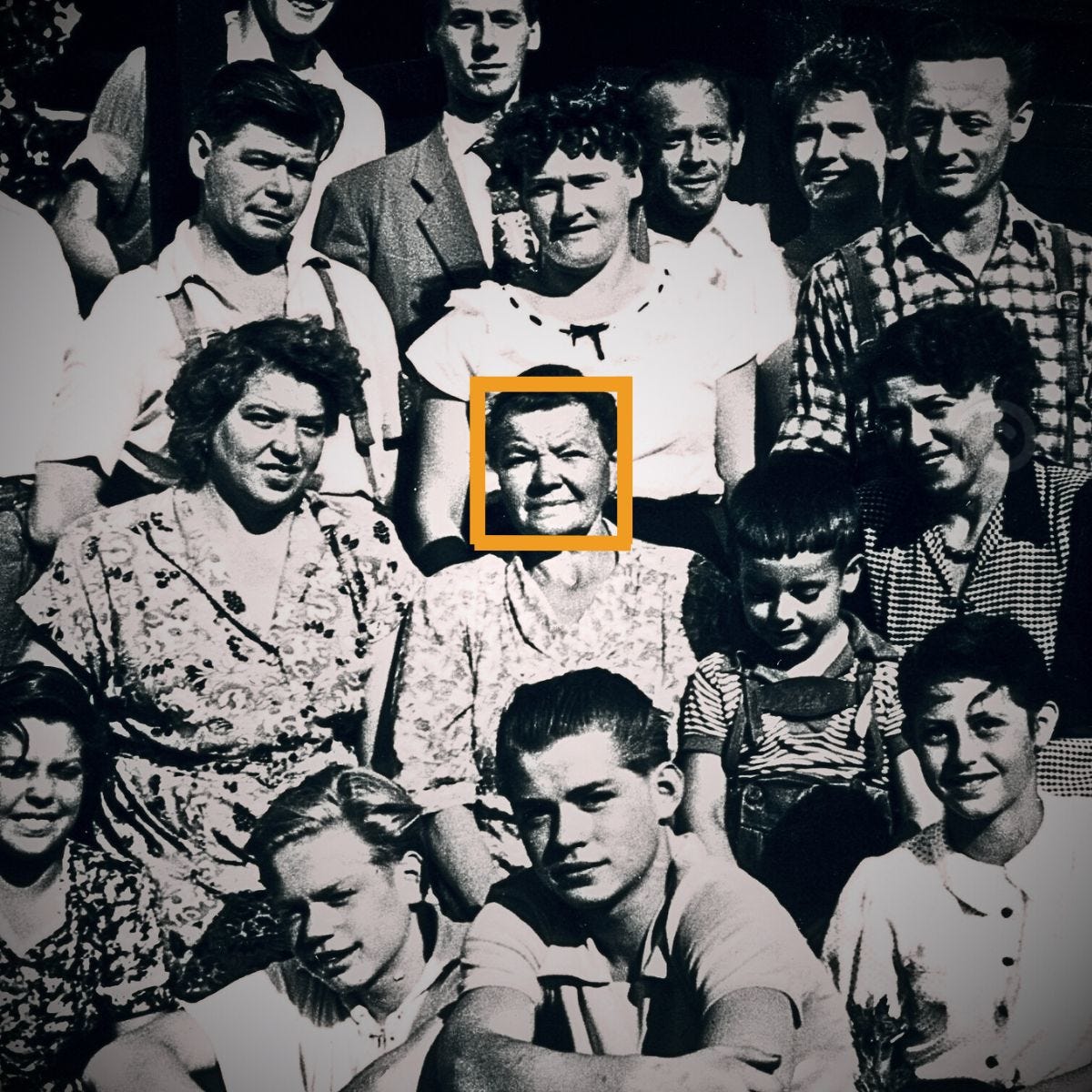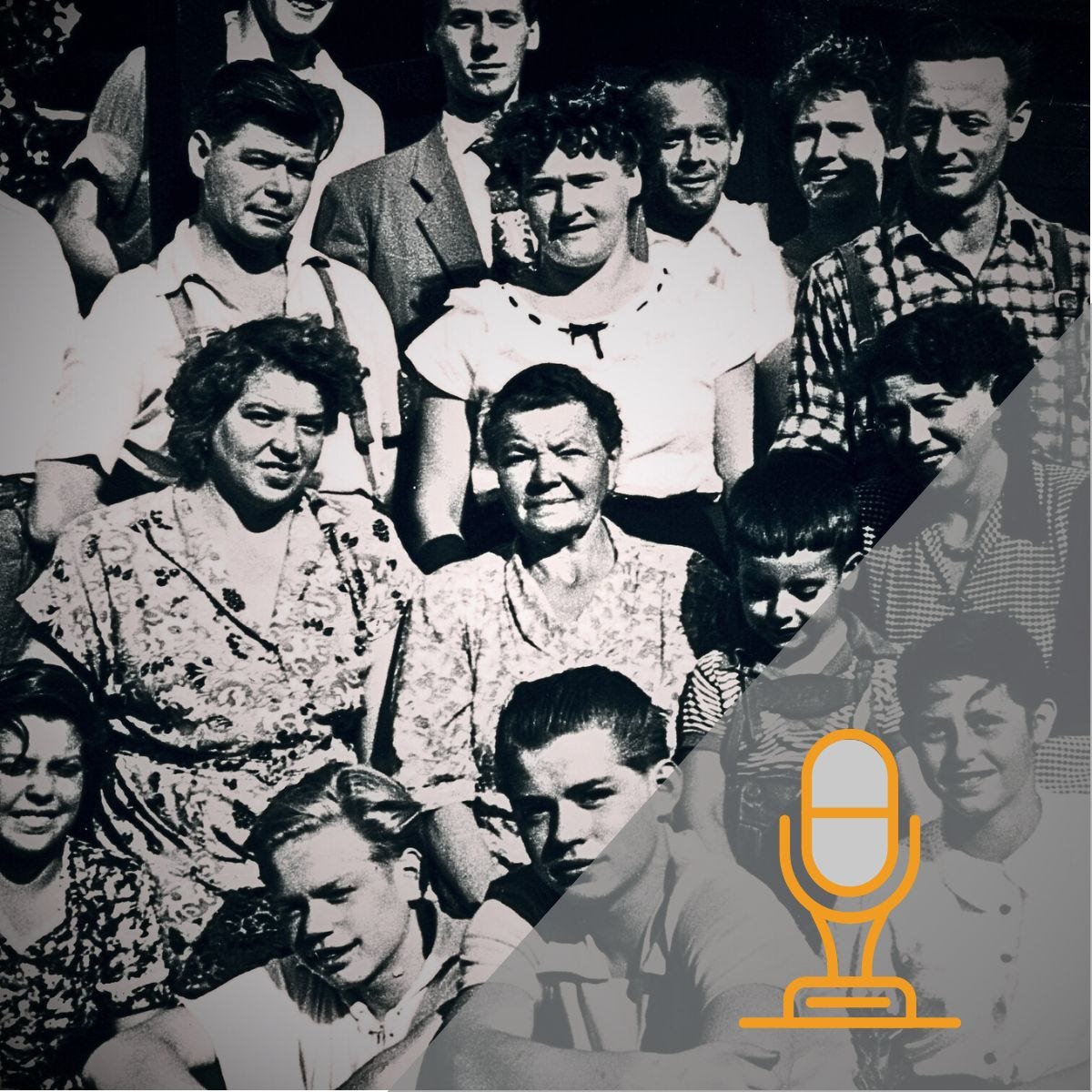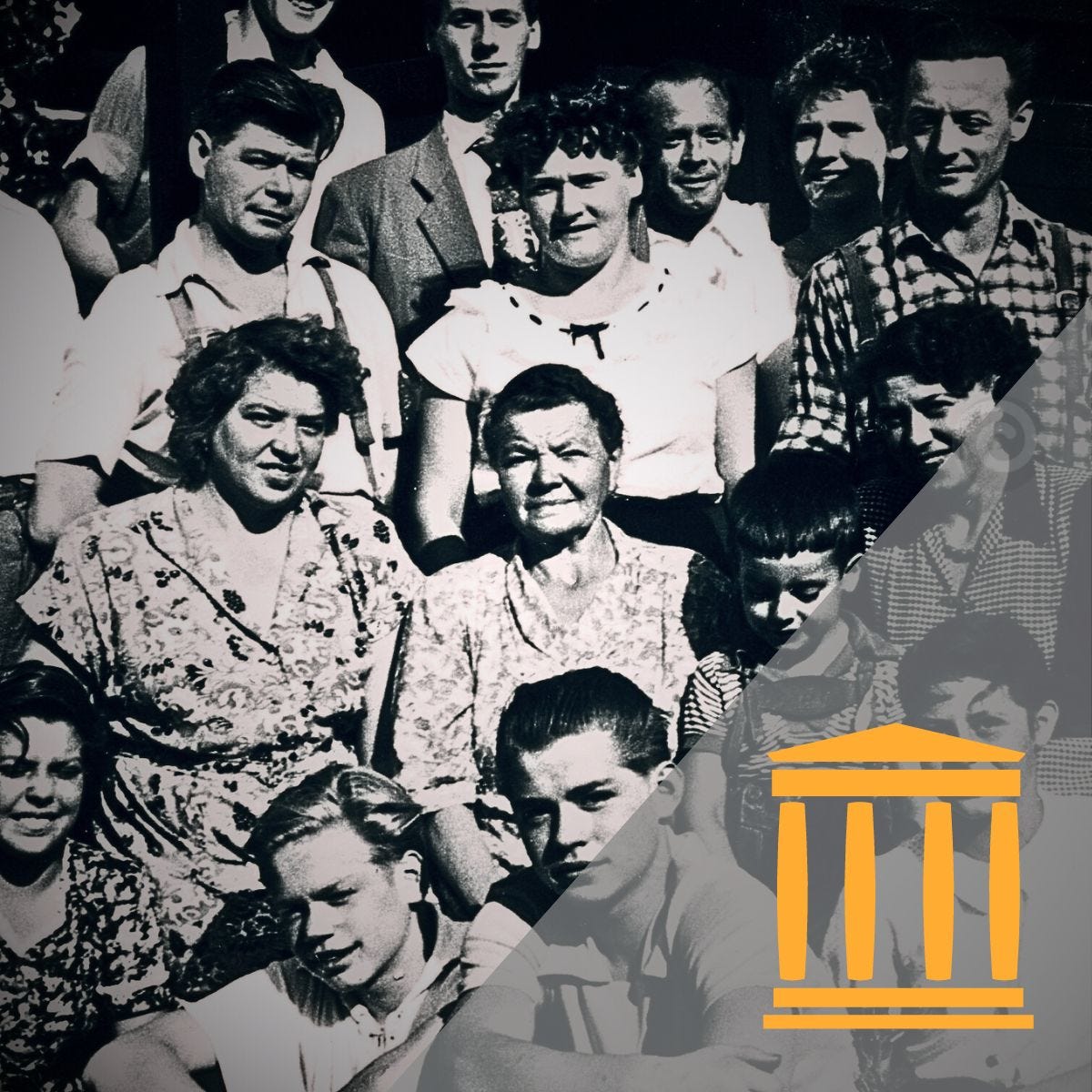5 Elements for Family History Projects Today
Our Ponga community taught us five crucial elements you need to create digital family history projects including old photos and artifacts.
Originally published for the Post-Ponga (now Projectkin.org) community on May 16, 2023.
For generations, paper was the best way to document and preserve family stories. Write it, pass it down. As generations passed, technological innovations in the mid-19th century made photos more commonplace, so they were added to the mix.
Today, as retiring Boomers and GenX-ers, our inheritance of generational memories has come to us in shoeboxes, albums, and tubs. Perhaps our parents were too busy navigating the Jet Age to capture the stories they’d heard from their grandparents. Carousels of slides, envelopes of prints, and boxes of letters would have to be enough to tell the tales. Photos, letters, and certificates are still an important way to document and preserve, it’s just not the only way. Digital forms create the potential to archive, share, and repurpose content in ways never before imagined.
Five elements of a digital solution for family history records
At Ponga, we had ambitions to put the tools of the Internet in the hands of family historians so they could craft their own stories in a myriad of modern forms. In the process, they could engage a new generation in their lived historical events: Viet Nam, Watergate, or just Mary’s Wedding at the farm. They could also tell their important stories in a private, personal space.
We may not have been able to bring Ponga into its full flower, but we’ve learned some key lessons about technology and the challenges of capturing family history.
In this post, I’ll focus on what I believe are the five critical elements of the solution we were building for our Ponga community. In each area, I’ll describe why these elements are so important and how, in the absence of Ponga, they might be achieved by using a combination of products in a routine or workflow. We were working toward a solution that…
Digital: Digitizing an inheritance of old family photos and artifacts is critical to preserving them.
Organized by faces: People are key to how we think about families (surprise!)
Storytelling: Creates a way to tell stories in a digital world where all kinds of new opportunities and obligations are created.
Archived: Proper archiving is vital to long-term preservation, without it the effort is ephemeral and will be lost.
Private yet shareable: The story you tell changes depending on who is (or might be) listening. True stories need a private, safe space.
To be clear, these aren’t just features, they’re pillars of a solution that may be incorporated into an individual product — or more likely — a combination of different products in a workflow. Ponga didn’t implement all of these, but we were successful in identifying the power of visuals and the distinct needs of family historians.
Our platform delivered the prerequisites like privacy, and facial organization as features, while other elements like storytelling and archiving were delivered in continually refreshed combinations with partners. We’re excited about the prospect of adding new, emergent technologies like generative AI into the mix to burnish illustration, research, and writing skills.
After a few years of working with our subscribers, we recognized a common pattern in what was important to our members. We noticed how they sought to combine Ponga with other tools like personal digital archives and email to solve a larger problem. This is why I believe so strongly in the distinction between a product and a workflow.
Family History photos are not the same as ordinary photos.
Before we go into the elements, I have one important clarification about this specific use case. Family History photos are not the same as ordinary photos. Most consumer software is designed for the general use case of taking pictures on a mobile device to share with family and friends. This is typically the way you see photo apps advertised by Google, Apple, and a dozen other software companies. There, the use case is simpler extending from a camera app to take a picture, perhaps an edit function to brighten it, and an integrated sharing function to distribute it and relive the moment.
The family history use case for managing digital photos I’m describing here is slightly different.
Photos might be contemporary as downloaded from a digital camera, or archival as uploaded from a scanner or other digitizing device. Scanning introduces a layer of complexity since the creation date on the file only reflects the date for the digitizing of the image, not the original date when the photograph was captured on film.
While everyone loves a good story, family historians are inherently interested in the stories behind the people in the images or the occasion for the photo. Since they’re often older or inherited photos, family historians may not count on lived memories to put faces to names. Since a primary goal for family history is preservation, a reliable means to manage digital artifacts becomes much more important. Combine that with the privacy necessary to share important stories and you quickly get to the five elements of this solution for family history as distinct from consumer photo applications.
In developing programming for our post-Ponga community, I’ve started with five elements. Here’s how:
❧ Digital
Digitizing an inheritance of old family photos, documents, and artifacts is just the first step. After swimming in this digital pond for a few decades, I’ve realized that digitizing your photos is as basic as backing up your hard drive. What you treasure as daguerreotypes and prints are optical images stored on paper. Scanning them and preserving the originals provides you some measure of assurance that they’ll be here for future generations to explore.
Programs: I plan to explore this element in our Kathy’s Corner series, a meeting each month hosted by professional photo organizer, Kathy Stone. Kathy brings her decades of experience to the challenge of digitizing her own photo archives. Don’t miss her post 8 Steps from Tubs of Photos to Tales of Yore that captures the digitizing workflow she recommends and why. In each Kathy’s Corner event, Kathy shares what she’s working on and leads the group in a discussion of their own projects. Sign up to hear about the next session.
❧ Organized by faces
Pictures put the family into family history. Seeing the faces of ancestors puts a very human perspective on historical events. Families with original photographs of Civil War soldiers have irreplaceable treasures to protect. Today’s AI features from any number of vendors can match faces quickly and easily. The resulting organization can add context to what was otherwise a pile of digital files. Once organized and labeled, you can see who was in events together, appreciate the age differences between contemporaries, and collect clues about seasons and special events.
Programs: I anticipate a series of events focusing on best practices. We may compare and contrast the user interfaces of different products, how they work together across mobile and desktop platforms, and how they handle of user data. I anticipate the first of these programs won’t occur until late Summer as I get started examining options.
❧ Tell stories (Storytelling)
In building Ponga, we saw storytelling as a critical differentiator. From our perspective, part of what was so crucial was that photos and stories stayed together. Ponga created a contextualized link between them. While a paperclip provides a contextual link too, it’s very easy to break that connection. We realized that the digital world created entirely new ways to tell stories and associate ideas. I’m excited to explore the myriad other ways to capture stories with new dimensions in our continually re-invented digital forms.
Programs: After participating in StoryCenter.org’s recent public workshop on digital storytelling, I’m especially excited about the range of different kinds of programs I can sponsor. The first in our series was June 8 where we dove into alternatives to Ponga for digital storytelling with a focus on Canva’s new whiteboard feature. This was just the first of a fun series of Tutorials for members.
❧ Archived
Most people are pretty careful about backing up and preserving their photos. In contrast, for family history, “pretty careful” isn’t good enough. These are artifacts that have been protected and preserved by our ancestors yet careless storage could permanently destroy them. At Ponga, we found that our members used Ponga for a subset of their photo collection. These were their most important photos that were worthy of the added organization, exploration, and storytelling. Archival treatment is an important field that combines best practices for technology with techniques for preservation.
Programs: Given the professional expertise in an area like this, I’m looking forward to inviting guest speakers and bloggers to talk about techniques and best practices in both the physical and digital fields of archiving.
❧ Private yet shareable
Privacy is a requirement I feel very strongly about. We have all kinds of social practices designed to protect privacy, and yet our business models in the digital world tend to undermine privacy. When it comes to sharing personal and family stories, control over the privacy of a story — and the resources that support it — is key.
Family history quickly pulls in those important events that form origin stories. Where someone was born, who their parents were, and why they married. These kinds of topics often are the basis for family secrets, untold stories, and painful memories. My attitude is not to prejudge who should tell what stories, but instead to ensure that technology doesn’t get in the way. These stories are very important. The story you share in your living room usually isn’t the same one you share over a mic in the town square.
Programs: I anticipate a variety of programs focusing on privacy as it affects 1) workflows; 2) how different vendors handle the privacy of your data; 3) simple techniques to encourage the people you share stories with to protect your shared privacy, and more.
Five elements: A better grasp of artifacts in family history
I hope that by structuring our posts and programming around these five areas I’ll have an opportunity to stay focused on what matters in this larger solution I’ve been advocating for. Understanding how these aspects affect workflows should help all family historians be more thoughtful about how they use these unique visual artifacts in their work and preserve them in context for future generations.
The Projectkin community role
(Originally “post-Ponga community, updated to reflect the new name.)
As part of our community, I want you to have some input here. I know my own best ideas are compilations of some of the terrific ideas I’ve gleaned from talking with all of you. This organizing structure lends itself well to the kinds of articles, events, and programming I’ve wanted to pull together so I expect it will at least be useful in that regard. My goal is to bring our community together so that we can compare notes on the challenges, evaluate workflows, and generally advocate for features and functions we believe to be important.
About me
Like you, I need a solution to fill the void created when Ponga went offline. As an active participant in its design, testing, and support, I know a bit about what we wanted and expected as an executive team. We learned so much from our members and their guests, that I want to build from there to re-imagine the software. As a family historian, I’m in it for the long haul. I hope you’ll join me and that we’ll all benefit from the resulting solution.
Learn more at Projectkin.org/about









